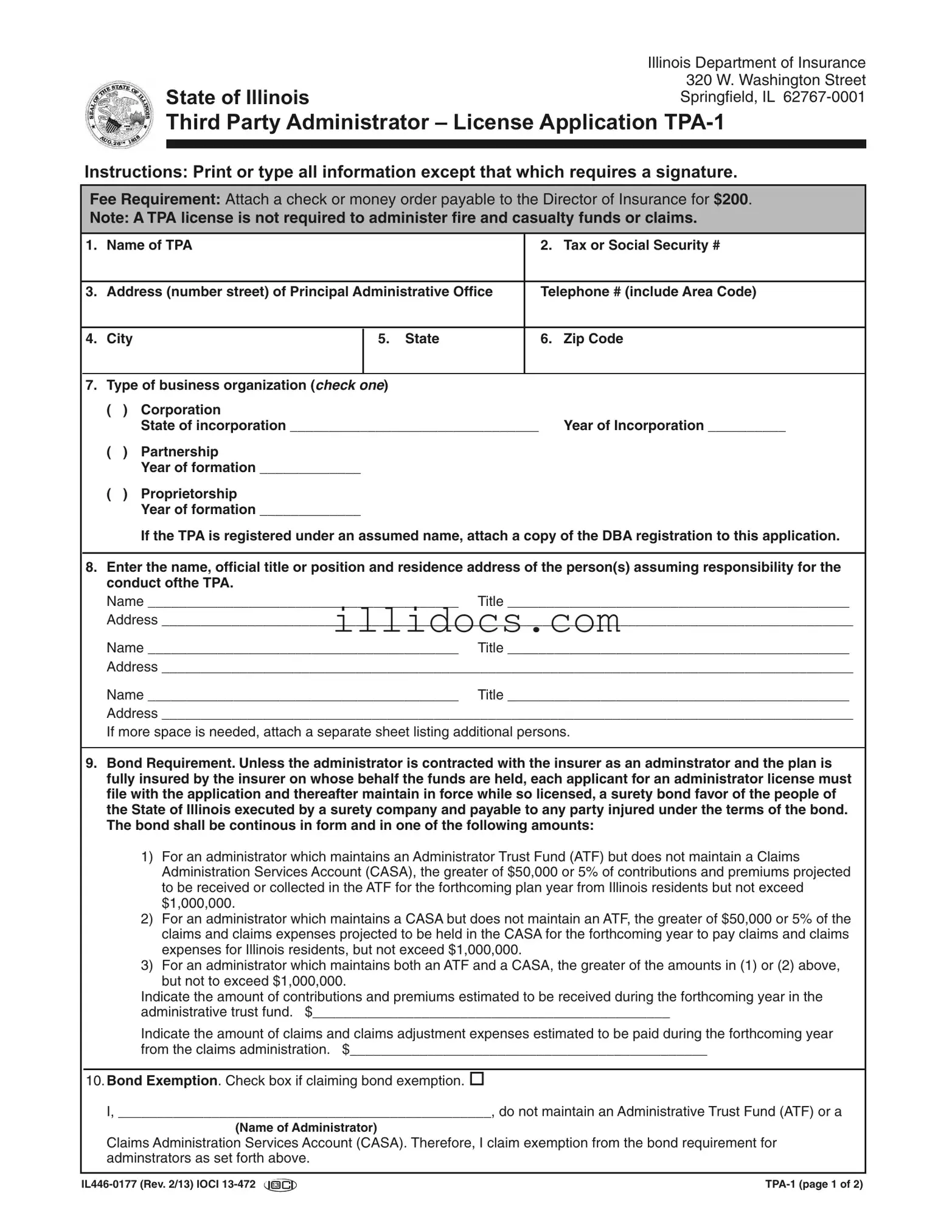What is the purpose of the Illinois TPA 1 form?
The Illinois TPA 1 form is an application for a license to operate as a Third Party Administrator (TPA) in the state of Illinois. This form collects essential information about the applicant, including business structure, financial details, and compliance with state regulations. It ensures that the TPA meets the necessary requirements to administer insurance claims and manage funds responsibly.
What are the fee requirements associated with the TPA 1 form?
To submit the TPA 1 form, applicants must include a fee of $200. This fee is payable by check or money order to the Director of Insurance. It is important to note that a TPA license is not required for those administering fire and casualty funds or claims, which may affect the need for this application.
What information is required about the TPA's business structure?
Applicants must provide details regarding their business organization type, which can be a corporation, partnership, or proprietorship. Additionally, the form requires the year of incorporation or formation, as well as the state where the business is incorporated. If the TPA operates under an assumed name, a copy of the DBA registration must be attached to the application.
Are there any bond requirements for TPAs in Illinois?
Yes, bond requirements vary based on the type of accounts maintained by the TPA. If the TPA does not have an Administrative Trust Fund (ATF) or Claims Administration Services Account (CASA), a surety bond must be filed with the application. The bond amount depends on the projected contributions, premiums, and claims expenses, but cannot exceed $1,000,000. There is also an option to claim an exemption from the bond requirement if certain conditions are met.
What should be done if there are any regulatory issues or criminal convictions related to the applicant?
If any administrator license has been denied, suspended, revoked, or surrendered due to regulatory action, the applicant must attach a copy of the relevant order. Similarly, if the applicant or any listed individuals have been convicted of a felony or entered a plea of nolo contendere, a certified copy of the indictment, judgment, and sentencing order must also be attached to the application. This ensures transparency and compliance with state regulations.
